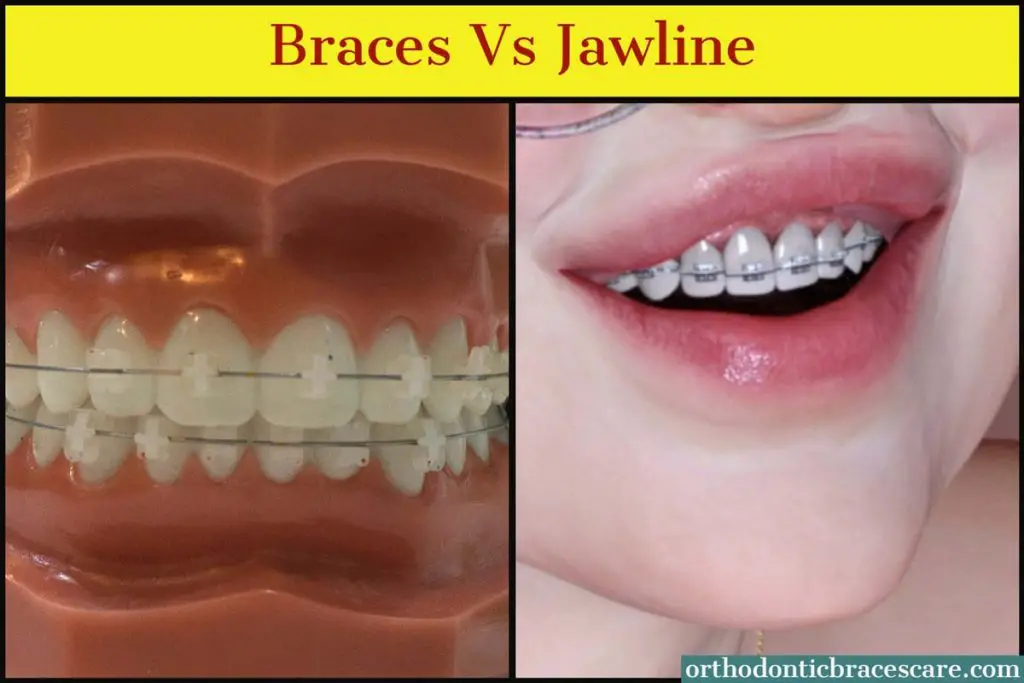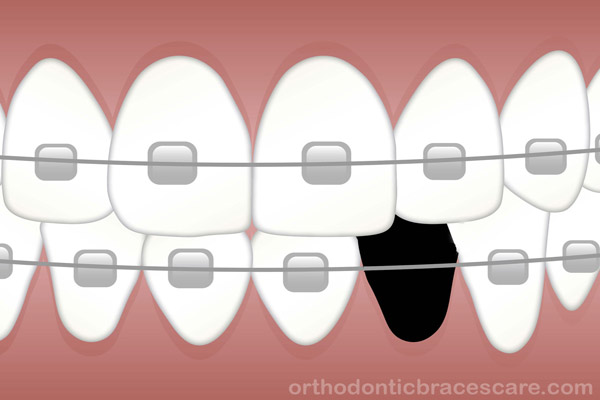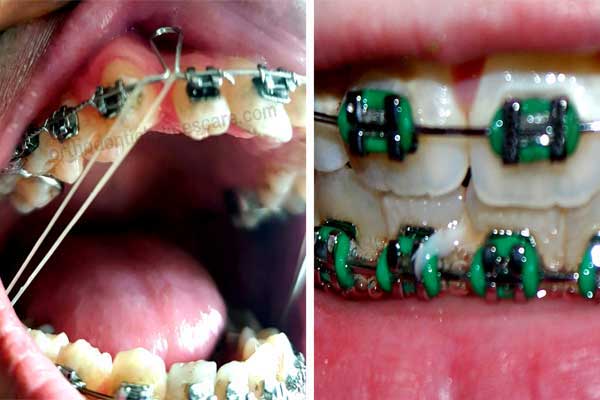When you are about to get braces treatment and have any doubt in your mind, you may ask, “Can braces change your jawline?“
Braces change your jawline and make it better by aligning teeth, fixing your abnormal bite, and improving the position of the jaw bone. This gives your face a more symmetrical and natural look. However, if you have a severe jawline issue, it may take other techniques to fix it with or without braces.
Let’s take a look at when braces can change and improve your jawline and what can be other techniques to correct it.
How can braces change jawline?

You get braces on your teeth. So, how can braces be related to jawline?
The jawline is the bottom portion of the jaw that makes an outline of the lower part of the face. This line depends on the size and position of the jaw.
The jaw bone holds the teeth inside your mouth. So, teeth have a deep relationship with the jaw bone.
On the other hand, those people who have orthodontic problems may have sticking out or thin jaw because of the teeth position, muscle of the chin, or jaw bone itself.
This is how braces change jawline:
By changing tooth position
When braces put force on your teeth, they apply pressure on the bone. As a result, changes occur within the bone and teeth move their position.
An example is an underbite when lower teeth are forwardly placed. After getting them straight you get a better jawline.
By changing the balance between facial muscle and teeth
The jawline is also related to the muscle and skin on the lower face. When you have a bite problem such as an overbite, you may not close your mouth normally.
You need to take help from the muscle of the chin. So, these muscles get stretched. This also gives you an abnormal jawline.
After fixing a bite problem with braces, muscles become relaxed. Thus, by changing teeth position and muscle balance braces can change the jawline.
But, this change isn’t very significant, as braces can’t change the whole structure of the jaw.
However, you can still be happy with the outcome as braces change the position of your lips, teeth, and jaw, therefore it changes the overall appearance of your face, and improve your smile.
Do braces ruin your jawline?
Before getting braces treatment many people get worried if braces can ruin their jawline.
Braces don’t ruin your jawline, rather they help improve it.
In fact, braces have less impact on your jawline. Whatever the changes happen, they will make your jawline better and give it a more natural appearance.
How do Braces improve your jawline?
Here are the ways how braces improve your jawline:
Fixing Overbite or class 2 malocclusion
This is the condition when your upper teeth stick out too far ahead of your lower teeth. This results in a sunken cheek.
As your top teeth are protruded, you can’t close your mouth without getting help from lower lips. When you force your lower lips to cover up the upper teeth, the muscle of your chin gets stretched.
This makes your chin look weak and affects your jawline. When you get braces, they fix the overbite and you get the straight front teeth.
So, you don’t have to give stress on your chin and cheek. You get a stronger chin, a better look, and an improved jawline.
Correcting Underbite or class 3 malocclusion
You know, the teeth of the upper jaw sit in front of the teeth of the lower jaw. But, when you have an underbite, your bottom lies forward to the top teeth. But, can braces move the lower jaw back?
Braces can’t move the lower jaw back that much if it’s sticking out too far ahead. But, braces can correct the underbite and bring the lower teeth back to the upper teeth.
So, in this case, you can see a significant improvement in the jawline after braces treatment.
Improving asymmetry
Braces make your face more symmetrical by fixing your overbite, underbite, or, teeth misalignment.
When you have severe overcrowded teeth or spacing, one side of the jaw may slightly deviate. Braces rearrange the teeth by correcting teeth crowding or closing the gaps and making the teeth and jaw symmetrical.
As a result, your jawline gets better. Correcting all of these problems also helps you improve your chewing and other habits.
When can’t you improve the jawline?
Braces can’t improve your jawline if the jaw bone isn’t normal in size or abnormally positioned.
There are some types of the jaw that braces can’t fix:
Severely protruded jaw
Maybe due to abnormal growth jaw bone can be protruded extremely. Even if you wear braces, you may have a little improved jawline. In orthodontics, we call it a class 3 skeletal malocclusion.
Long and big size jaw
Sometimes, during the growth and development of the jaw, the lower jaw gets much bigger than the normal size.
Lower faces look longer in these cases. As braces can’t change the whole jaw, you don’t get a better jawline after braces.
Thin jaw and short jaw
In some situations, the lower jaw doesn’t get developed as it should. It remains short. If the problem is severe, though braces can give a better appearance, they can’t improve the jawline much.
Severely retruded and short jaw
Because of growth and development problems, the lower jaw stays much backward in comparison to the upper jaw.
It gives a class 2 malocclusion in which upper teeth are positioned more forwardly. Braces may not help you to boose your jawline in this case.
Alternative to braces to improve the jawline
When braces alone can’t improve your jawline, your orthodontist may suggest other alternatives. So, you don’t need to worry.
If someone visits an orthodontist during growing age, he or she gets the best treatment. The growth of the jaw can be maintained by various orthopedic devices.
Here are some examples based on the types of cases:
Headgear and chin cap
This device helps prevent the jaw from getting protruded. So, he or she won’t have an underbite in the future.
Palatal expander
It controls the growth of the upper jaw and expands the size of the arch. This provides the required space for the teeth.
As these devices aren’t effective in adults, they may still consider braces treatment to improve the jawline. At the end of the treatment, your overall look will be better than before.
In some situations, you may not need braces, but you still want to get them.
Takeaways
Braces help improve the jawline by correcting bites, aligning teeth, and maintaining facial muscle. Though the change isn’t so big, you get a more natural appearance after the end of orthodontic treatment.


